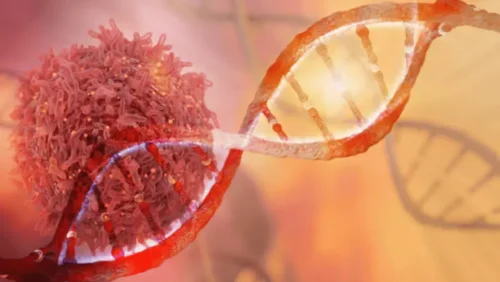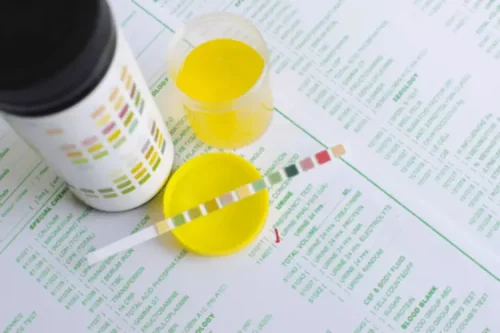
Despite the frequency of abdominal symptoms, objective findings other than tenderness were infrequent. Both Wrenn et al6 and Fulop and Hoberman5 found evidence of alcoholic hepatitis to be common, with frequent elevations in serum transaminase activities and bilirubin. In contrast to diabetic ketoacidosis, the predominant ketone body in AKA is β-OH. Routine clinical assays for ketonemia test for AcAc and acetone but not for β-OH.
- Without insulin, most cells cannot get energy from the glucose that is in the blood.
- Each of these situations increases the amount of acid in the system.
Ketogenesis
- The low glucose stores combined with lack of food intake cause low blood glucose levels.
- Growth hormone, epinephrine, cortisol, and glucagon are all increased.
- Free fatty acids are removed by the liver, where they primarily undergo oxidation to hydroxybutyric acid and acetoacetate and subsequently are reesterified to triglyceride.
- The prognosis for alcoholic ketoacidosis is good as long as it’s treated early.
One complication of alcoholic ketoacidosis is alcohol withdrawal. Your doctor and other medical professionals will watch you for symptoms of withdrawal. When your body burns fat for energy, byproducts known as ketone bodies are produced. If your body is not producing insulin, ketone bodies will begin to build up in your bloodstream. This buildup of ketones can produce a life-threatening condition known as ketoacidosis. Alcoholic ketoacidosis (AKA) is a common reason for investigation and admission of alcohol dependent patients in UK emergency departments.

Table 1 Metabolic factors affecting acid base balance in AKA .
The low alcoholic ketoacidosis smell glucose stores combined with lack of food intake cause low blood glucose levels. Without insulin, most cells cannot get energy from the glucose that is in the blood. Cells still need energy to survive, so they switch to a back-up mechanism to obtain energy.
Prevention
The condition is further exacerbated by lipolysis, which releases free fatty acids into the bloodstream, and intravascular volume contraction. Additionally, it has been found that episodes of AKA are often triggered by a lack of oral nutrition over a period ranging from one to three days, particularly in individuals with a history of alcohol use disorder (AUD). In patients suspected of having alcoholic ketoacidosis, serum electrolytes (including magnesium), blood urea nitrogen (BUN) and creatinine, glucose, ketones, amylase, lipase, and plasma osmolality should be measured.
Clinical Assessment and Diagnosis of Alcoholic Ketoacidosis
The classical presentation is of an alcoholic patient with abdominal pain and intractable vomiting following a significant period of increased alcohol intake and starvation. There may be a history of previous episodes requiring brief admissions with labels of “query pancreatitis” or “alcoholic gastritis”. Without enough insulin, the body begins to break down fat as fuel. This causes a buildup of acids in the bloodstream called ketones. If it’s left untreated, the buildup can lead to diabetic ketoacidosis.
- The patient’s recent nutritional intake, particularly a history of poor oral intake or fasting, is also considered, as AKA often occurs after a period of relative starvation.
- Although many patients had a significant ketosis with high plasma BOHB levels (5.2–14.2 mmol/l), severe acidaemia was uncommon.
- In some cases, diabetic ketoacidosis may be the first sign of having diabetes.
- When you drink alcohol, your pancreas may stop producing insulin for a short time.
- The long-term prognosis for the patient is influenced more strongly by recovery from alcoholism.
What are the complications of alcoholic ketoacidosis?

If you have any additional complications during treatment, this will also affect the length of your hospital stay. If your blood glucose level is elevated, your doctor may also perform a hemoglobin A1C (HgA1C) test. This test will provide information about your sugar levels to help determine whether you have diabetes. These conditions have to be ruled out before a medical professional can diagnose you with alcoholic ketoacidosis. It’s important to note that AKA treatment also includes addressing any underlying issues, such as alcohol use disorder, and may involve a multidisciplinary approach including medical, nutritional, and psychological support.

Your cells need insulin to use the glucose in your blood for energy. If they can’t use glucose because there’s not enough insulin, your body switches to another method to get energy — breaking down fat cells. Your doctor may also admit you to the intensive care unit (ICU) if you require ongoing care. The length of your hospital stay depends on the severity of the alcoholic ketoacidosis. It also depends on how long it takes to get your body regulated and out of danger.
Alcoholic Ketoacidosis Symptoms
The accompanying lack of alcohol in the patient’s body and the fact that for some time, the only source of calories that a patient has is ethanol both contribute to the clinical syndrome that we see. Alcoholic ketoacidosis is attributed to the combined effects of alcohol and starvation on glucose metabolism. Take our free, 5-minute alcohol abuse self-assessment below if you think you or someone you love might be struggling with alcohol abuse. The evaluation consists of 11 yes or no questions that are intended to be used as an informational tool to assess the severity and probability of an alcohol use disorder.
Treatment of Alcoholic Ketoacidosis
Free fatty acids are removed by the liver, where they primarily undergo oxidation to hydroxybutyric acid and acetoacetate and subsequently are reesterified to triglyceride. Decreased insulin and elevated glucagon, cortisol, catecholamine, and growth hormone levels can increase the rate of ketogenesis. Free fatty acids are either oxidized to CO2 or ketone bodies (acetoacetate, hydroxybutyrate, and acetone), or they are esterified to triacylglycerol and phospholipid. Carnitine acyltransferase (CAT) transports free fatty acids into the mitochondria and therefore regulates their entry into the oxidative pathway. The decreased insulin-to-glucagon ratio that occurs in starvation indirectly reduces the inhibition on CAT activity, thereby allowing more free fatty acids to undergo oxidation and ketone body formation. During starvation, there is a decrease in insulin secretion and an increase in the production of counter-regulatory hormones such as glucagon, catecholamines, cortisol, and growth hormone.
If you chronically abuse alcohol, you probably don’t get as much nutrition as your body needs. Going on a drinking binge when your body is in a malnourished state may cause abdominal pain, nausea, or vomiting. Infection or other illnesses such as pancreatitis can also trigger alcoholic ketoacidosis in people with alcohol use disorder.
